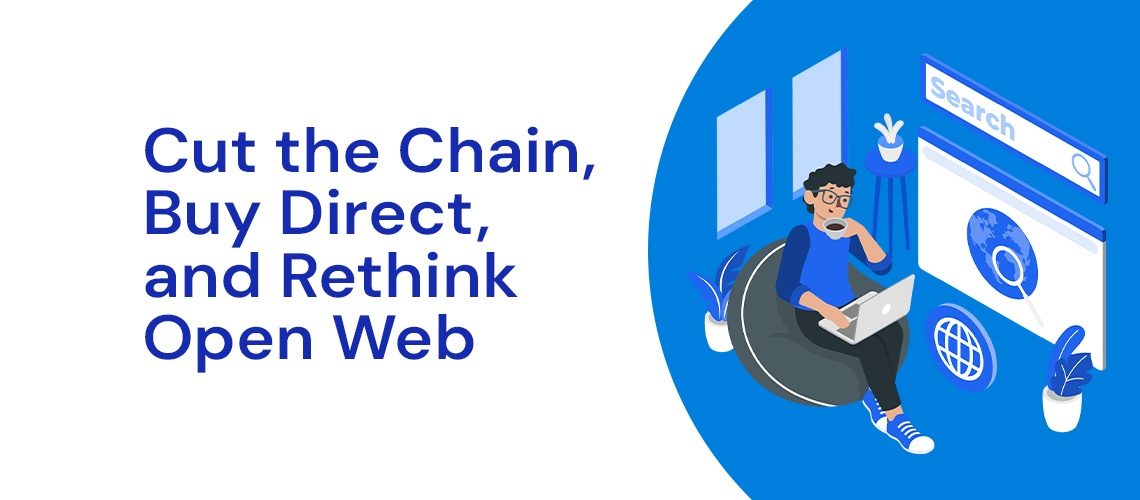The ANA’s transparency report, which mapped open web programmatic spending for brands including Mondelez, Shell, Nissan, Dell, Molson Coors and Walgreens, makes for interesting reading. For one of the top 25 SSPs that was found to be pushing 71 percent of spend to made for advertising sites, it makes highly uncomfortable reading.
Eight of the top 25 SSPs, i.e. around a third, were directing more than the average of 15 percent of spend to made for advertising – or made for arbitrage – websites, according to the study, which mapped 35 billion impressions. Another eight SSPs, however, had negligible made for advertising spend, which suggests the remainder were allocating significant double-digit spend to sites designed squarely to siphon off ad budgets.
The ANA suggested advertisers make up their own minds about whether they want to spend their ad dollars hitting those sites – probably not the toughest decision for marketers seeking genuine growth over vanity metrics. The problem is, too few are. According to the report, the top five advertiser metrics for programmatic campaigns are, in order of priority: Brand safety; viewability, invalid traffic avoidance, reach, and cost. Return on investment comes in sixth, conversion is tenth, while cost per acquisition/conversion twelfth.
The people building and profiting from made for advertising sites have therefore simply recognized the metrics of ‘success’ and built brand safe sites with high viewability that offer cheap CPMs. Hence taking such a high proportion of ad dollars, with the ANA’s report finding 25 percent of the $88 billion global open web programmatic ad market, or $22 billion, is effectively wasted.
The good, the bad, and the ugly

The report also highlights the good, the bad, and the ugly in terms of routes between advertiser and audience. The worst of the 25 SSPs included in the study rebroadcast 87 percent of media, which means a more convoluted supply chain, more wasted dollars and a higher carbon footprint – not ideal when cost pressures and ESG mandates converge. The best SSPs had direct paths to publishers 97 percent of the time.
Advertisers definitely don’t need 50 SSPs, per the report, the number – at least – the average DSP is connected to. Five to seven “are likely optimal and can provide access to close to 100 percent of supply across web, mobile app, and CTV environments,” it states, and reduces the likelihood of a brand ending up bidding against itself and driving up costs.
For advertisers, there is a simple fix: “Decide which SSPs you want to buy from via your DSP. Uncheck all other SSPs in your DSP campaign setup,” per the report. Then “apply pressure” to those chosen partners to build curated marketplaces, i.e. inclusion lists of ‘good’ publishers. The ANA said the opposite, building exclusion lists, was a “herculean and futile task”, and will only get harder as generative AI-built sites create a tsunami of junk inventory.
Consolidation incoming?
If advertisers heed that call, it likely means further adtech consolidation is incoming. Some major players declined to take part in the transparency study – or ‘could not provide data in the required timeframe’, per the ANA – namely The Trade Desk, Amazon, Yahoo, Google AdX and PubMatic. But their size and market share means they are highly unlikely in the short term to get shut out by advertisers hell bent on transparency. As ever, the smaller players will bear the brunt of supply chain shortening. Either way, the ANA gave a wrap to the players that did lift the hood. “While the ANA is not in the position to recommend specific SSPs, the participating SSPs in this study should at least be considered: Index Exchange, Magnite, Microsoft Advertising, OpenX, and SpotX (part of Magnite),” states the report. Which sounds suspiciously like a recommendation.
Likewise long-tail publishers could also suffer if advertisers heed the call to drastically cut the number of publishers they work with. According to the report, the 21 major brands in the study were on average advertising across 44,000 websites and apps. Some were using more than 200,000. That’s way too many, suggested the ANA, advising brands to start curating lists of 75-100 trusted, quality publishers or sellers, which will collectively deliver thousands of sites and sufficient scale and reach. It advises advertisers to ultimately only work with publishers that accept ad verification tags.
Private marketplaces - oversold?
While private marketplaces are often sold as a way of avoiding low quality publishers, the ANA’s report found that many, particularly the larger PMPs, were little better than the open web. PMPs that include more than 500 publishers directed on average 19.8 percent of impressions to made for advertising sites versus 29.8 percent on the open web – yet the average CPM was twice as high. Meanwhile, invalid traffic rates on those large PMPs were actually higher than the open web.
The ANA said the practice of some SSP-curated PMPs was akin to the collateralized debt obligations (CDOs) – i.e. banks hiding sub-prime mortgages in with the good stuff – that sparked the GFC in 2008.
“Similarly, if the average PMP mixes high-quality premium inventory with
low-quality inventory (including made for advertising sites) to maintain an overall low CPM, it creates a perception of high quality that does not always align with reality. Most importantly, for advertisers looking to maximize impact against KPIs, the results will be suboptimal,” per the report.
“Some PMP inventory is high quality and may be worth the premium price, however the days of simply assuming all PMP inventory is worth the premium are behind us. Increase your understanding of what types of PMPs you buy from and consider experimenting with allocating more budget towards OMPs (open marketplaces). With proper checks, controls, and optimizations in place, open marketplace inventory can drive comparable quality at a lower cost.”
Log-level data is "paramount"

After shortening supply chains, just about everything from that point hinges on access to log-level data, which means advertisers and their partners can audit the trail – and gauge whether what they are buying is of genuine value and what is not. That means they can start working out a ‘true CPM’ (versus a face-value CPM that is hiding junk), and run the rule over where and with whom they are spending.
The problem is, too few advertisers have access to that data – and it’s not easy to interpret. “Our study found that many buyers did not even know what log files were, how to acquire them, or what to do with them in the event they receive them,” per the report. “Log files are incredibly voluminous, expensive to store, and difficult for any layperson without a data science background to understand.”
But for those with appetite, the ANA suggests www.tagtrust.net/insights, which keeps track of the adtech companies which provide access to log-level data, is a good place to start.
The ANA also advises advertisers contract directly with DSPs, SSPs, and ad verification providers to ensure access to that data.
Ultimately, the advertisers’ association tells its members to wise up – and if feasible, hire a Chief Media Officer, given the scale of investments, and subsequent wastage, they are signing off on.
If the report has its numbers right, there are $22 billion reasons to act on that advice.


